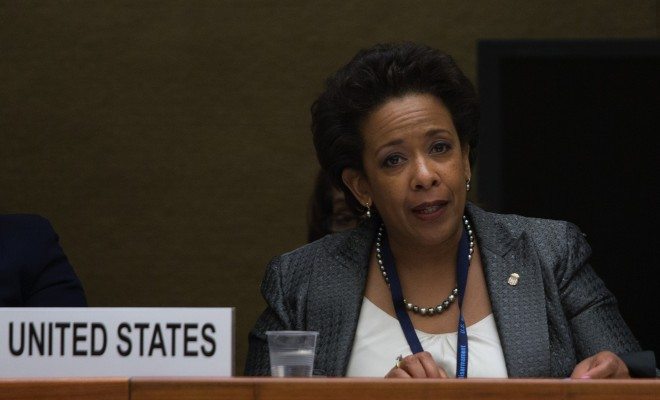 Featured Image Courtesy of [United States Mission Geneva/Eric Bridiers via Flickr]
Featured Image Courtesy of [United States Mission Geneva/Eric Bridiers via Flickr]
Law
Rape Kits: New Funding to Bring Victims Justice
The state of New York and the U.S. Department of Justice are now investing millions in testing backlogged rape kits. The grants will be allotted to local jurisdictions across America in hopes of bringing justice for rape victims. New York was the first state to start this process and is at the forefront of the effort. The grants will not only serve to convict rapists, but will also prevent future crimes by putting criminals behind bars.
Overview
Prevalence of Sexual Assault in the United States
It is commonly known that the number of sexual assault crimes are grossly underestimated. Due to the nature of the crime, victims are often reluctant to report what happened to them. But according to a 2010 report by the National Center for Injury Prevention and Control, one in five women in the U.S. will be raped in their lifetimes. Statistics show a sexual assault crime occurs every two minutes, but only 39 percent of those crimes are reported.
What is Rape Kit?
When a victim of sexual assault does report the crime, a sexual assault kit (SAK), also known as a rape kit, is used by a doctor or nurse (usually in a hospital) to preserve possible DNA evidence. Then the SAK is turned over to the police. The process is extremely invasive and can last between four and six hours. First, the victim stands on a large paper sheet, while undressing, in order to contain any stray fibers or hairs that could be used as evidence. According to ENDTHEBACKLOG, the examiner collects biological evidence from the victim’s “saliva, blood, semen, urine, skin cells and hair by taking swabs of the victim’s skin, genitalia, anus and mouth, scraping under the victim’s fingernails and combing through the victim’s hair.” The victim is also photographed from head to toe to document any and all injuries. In order to preserve evidence, victims are asked to not eat, drink, or urinate until the exam in over.
Generally, a state SAK will include: Detailed instructions for the examiner, forms for documenting the procedure and evidence collected, tubes and containers for blood and urine samples, paper bags for collecting clothing and other physical evidence, swabs for biological evidence collection, a large sheet of paper, dental floss and wooden sticks for fingernail scrapings, glass slides, sterile water and saline, and envelopes, boxes and labels for each part of the exam.
Some states have highly trained staff to conduct these procedures called Sexual Assault Forensic Examiners (SAFEs) or Sexual Assault Nurse Examiners (SANEs). Not only are they trained on how to be more specifically sensitive to sexual assault victims, studies show that SAKs conducted by SAFEs or SANEs are more consistent and of higher quality. If examiners aren’t extremely careful, the experience could feel like a re-victimization to the patient or the SAK could be inadmissible in court due to mishandling.
After the SAK is completed and given to local law enforcement, DNA from the kit and alleged rapist is entered into the FBI’s national database CODIS (Combined DNA Index System). CODIS allows authorities to track serial rapists across the United States.
Untested SAKs
There are several different reasons for the large backlog of untested rape kits. They may not have been sent to a public or private crime lab in a timely fashion and remain in storage–including police department evidence rooms, crime labs, hospitals, clinics, rape crisis centers–or the SAKS remain at the lab without being processed. Although the exact number of backlogged SAKs across the country is unknown, the numbers found in specific cities are quite staggering. In 2009, 11,000 forgotten SAKs were found in a Detroit police warehouse. In addition, Los Angeles has almost 12,500 backlogged kits, Houston has approximately 6,500, and Memphis has over 12,000.
SAK backlogs have become a significant issue for local police departments, a National Institute of Justice (NIJ) survey of more than 2,000 law enforcement agencies found:
18 percent of unsolved alleged sexual assaults that occurred from 2002 to 2007 contained forensic evidence that was still in police custody (not submitted to a crime lab for analysis).
The NIJ study noted that some SAKs remain in law enforcement custody when the case is a matter of “consent.” In that case, the suspect admits to sexual intercourse, but maintains that is was consensual. A SAK will not shed light on that matter. Cases could have also been dropped, or a guilty verdict was already rendered.
Other reasons are far more alarming. Forty-three percent of the agencies claimed they did not have a computerized system for tracking forensic evidence, either in their inventory or for after it was sent to the crime lab. Nearly 45 percent of the law enforcement agencies admitted that one of the reasons they kept SAKS was that they didn’t have a suspect. And fifteen percent reasoned that the analysis had not been requested by a prosecutor. Three in 10 officers claimed they did not turn in the SAK because they were unsure of its usefulness. Another 11 percent of the agencies claimed one reason they didn’t submit evidence was due to consistent untimely results of the lab, while another six percent claimed the lab wasn’t accepting more evidence because of a backlog. The NIJ study also argues that biases contribute to the problem. For example, SAKs may have gone untested if the victim was a prostitute, a drug user, or was mentally ill.
There are several explanations for the backlog of SAKS, but one thing is clear–law enforcement agencies across the country are not on the same page whether from a lack of training, funding, or personal prejudices.
New Funding
Earlier this month, Vice President Joe Biden, Attorney General Loretta Lynch, and Manhattan District Attorney Cyrus Vance announced that $80 million worth of grants would be invested into radically reducing the number of backlogged SAKs across the United States. In the announcement, Vance said that the state of New York is donating $38 million to 32 jurisdictions in 20 states, while Lynch pledged $41 million to investigate the reasons behind the backlog. “I’m saying today to all the women awaiting justice,” Vance stated, “you are not forgotten.” Together, the funds from Department of Justice (DOJ) and state of New York are expected to help test 70,000 untested SAKs in 43 jurisdictions in 27 states.
Vice President Biden praised the effort saying,
When we solve these cases, we get rapists off the streets… For most survivors, seeing their rapists brought to justice, and knowing that they will not return, brings peace of mind and a sense of closure. The grants we’re announcing today to reduce the national rape kit backlog will bring that sense of closure and safety to victims while improving community safety.
The issue hits close to Biden’s heart; he and Senator Barbara Boxer co-authored the Violence Against Women Act (VAWA) back in 1994. Biden and Boxer condemned the lethargic response from police and prosecutors as well as the skewed attitudes toward violence against women in general.
History has shown a correlation between testing backlogged SAKs and convictions. New York was the first state to eliminate its backlog, testing 17,000 SAKs between 2000 and 2003. It resulted in 49 indictments. The grants will not only prevent future rapes but will give thousands of women across the country the justice they deserve.
Related Legislation
Over the last five years, Congress has passed several laws to address SAK backlogs across the country. The DNA Analysis Backlog Elimination Act of 2000 authorizes the Attorney General to make grants to eligible states in regards to SAK backlogs. The grants are specifically aimed toward the collection, analysis, and indexing of DNA samples in CODIS as well as for increasing state and local lab capacitates. To receive such grants, states must adhere to certain provisions, including the timely delivery of tested SAKs.
In 2013, President Obama signed the Violence Against Women Reauthorization Act. It was the third time the act has been reauthorized. Among other things, the reauthorization addressed new provisions to tackle the rape kit backlog across the country. First, it amended the aforementioned Backlog Elimination Act of 2000 by increasing audit requirements for SAK backlogs, increasing grants, and increasing state and local lab capacities. It expanded the focus of VAWA grants to include fortifying law enforcement and forensic response. The act also required states to minimally allocate “20 percent of funds within the STOP (Services, Training, Officers, Prosecutors) program and 25 percent of funds within the Grants to Encourage Arrest Policies and Enforce Protection Orders program be directed to programs that meaningfully address sexual assault.”
More than ever, states are dedicated to ending their respective SAK backlogs. Colorado, Illinois, and Ohio have all passed legislation to reduce backlogs. Arkansas, Kentucky, Virginia, and Louisiana passed legislation that requires an inventory of untested SAKs. California and Michigan enacted guidelines for processing evidence derived from SAKs. Texas allocated $10.8 million to untested SAKs in its 2014-15 state budget. It is also within a state’s jurisdiction to define statutes of limitation. Some advocates fight for the clock on statutes of limitations to start only once a SAK has been tested, as addressed in this video.
Proponents of this change argue that rapists should never benefit from a SAK that remained untested for so long that the respective crime exceeded a statute of limitation law.
Conclusion
It seems like a number of things need to come together to eradicate the backlog nationwide. For the most effective standards, the United States needs a uniform system of analyzing and indexing evidence in addition to regularly trained teams of trained nurses, doctors, law enforcement, and prosecutors. Funding is also necessary to allow all the different parts of the process to come together effectively. The recent $80 million investment in SAK testing can bring justice and closure to thousands of women.
Resources
Primary
Congressional Research Service: Violence Against Women Act
DOJ: Unanalyzed Evidence in Sexual Assault Cases
Additional
EndtheBacklog: Defining the Rape Kit Backlog
EndtheBacklog: What is a Rape Kit and Rape Kit Exam?
EndtheBacklog: Where the Backlog Exists
Govtrack: Summaries for the DNA Analysis Backlog Elimination Act of 2000
Huffington Post: Joe Biden, Loretta Lynch Pledge Millions To Resolve Rape Kit Backlog
National Center for Injury Prevention and Control: Statistics about Sexual Violence
NRC on Domestic Violence: The Effectiveness of Sexual Assault Nurse Examiner (SANE) Programs
Time: Authorities Invest $80 Million in Ending the Rape Kit Backlog
Time: Here’s What Happens When You Get a Rape Kit Exam








Comments